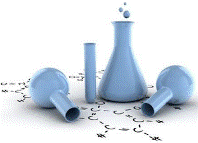Chemical and Biomolecular Engineering, Department of
Date of this Version
6-2014
Document Type
Article
Citation
Published in Cellular and Molecular Bioengineering, Vol. 7, No. 2, June 2014 DOI: 10.1007/s12195-014-0333-z
PMCID: PMC4237222Abstract
Human pluripotent stem cells (hPSCs)—including embryonic stem cells (hESCs) and induced pluripotent stem cells (hiPSCs)—are very promising candidates for cell therapies, tissue engineering, high throughput pharmacology screens, and toxicity testing. These applications require large numbers of high quality cells; however, scalable production of human pluripotent stem cells and their derivatives at a high density and under well-defined conditions has been a challenge. We recently reported a simple, efficient, fully defined, scalable, and good manufacturing practice (GMP) compatible 3D culture system based on a thermoreversible hydrogel for hPSC expansion and differentiation. Here, we describe additional design rationale and characterization of this system. For instance, we have determined that culturing hPSCs as a suspension in a liquid medium can exhibit lower volumetric yields due to cell agglomeration and possible shear force-induced cell loss. By contrast, using hydrogels as 3D scaffolds for culturing hPSCs reduces aggregation and may insulate from shear forces. Additionally, hydrogel-based 3D culture systems can support efficient hPSC expansion and differentiation at a high density if compatible with hPSC biology. Finally, there are considerable opportunities for future development to further enhance hydrogel-based 3D culture systems for producing hPSCs and their progeny.
Included in
Biological Engineering Commons, Molecular, Cellular, and Tissue Engineering Commons, Other Biomedical Engineering and Bioengineering Commons



Comments
Copyright 2014 Springer. Used by permission.